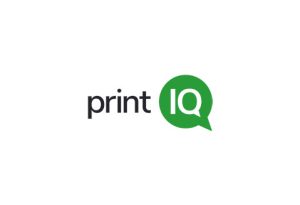“All successful companies are constantly benchmarking their competition.
They have to know what they have to match up with day-in and day-out if their company is going to be successful.”
— James Dunn, founding editor of Shares magazine
Or more simply put – metrics matter.
Over a year into a global pandemic, with the fog finally starting to clear, businesses are realizing that their biggest test may not have been surviving but facing the unpredictability of what happens next. How did you spend your time planning and strategizing for a Covid-free world? Do you understand the customer needs in the ‘new normal’ or ‘new economy’, and are you ready to react to any resulting shifts and trends in industry requirements?
Now more than ever, benchmarketing and evidence-based analysis is critical for organizations to stay relevant, identifying the opportunities, gaps and areas of improvements between your business against market and industry standards.
‘Benchmarketing’ is the term coined to describe using benchmarking data to influence your marketing strategy and plan out the best strategies for your business.
In print businesses especially, we all spend an overwhelming amount of time trying to understand our business and production processes, our workflows and integration points. We endure endless conversations on how to tie together legacy systems, getting rid of manual touch points and unnecessary costs. The buzz words get tired: automation, efficiency, productivity, scalability. Yes, we get it, but what are the results of your processes, services and investments? Do you have a clear view of where the opportunities are and what success actually looks like?
The goal of benchmarketing is to analyze performance and turn insights into opportunities and goes beyond your organization’s products and services. It is being able to understand your customer needs and tracking the internal and external performance markers – technology, trends and social changes – that guarantee your applicability to their success. By implementing benchmarketing practices and using actionable data, you’re laying the foundation for better processes and investment decisions.
Categories of business benchmarking have morphed over the years, though essentially they come down to 4 areas (Synthesio, an IPSOS company, 2020):
- Internal benchmarking: examining and sharing best practices, comparing specific business processes within the organization.
- Competitive benchmarking: evaluating a firm’s position with an industry, comparing processes and services.
- Functional benchmarking: defining best practices by comparing practices and performance results of similar business functions across industries.
- Generic benchmarking: conceptualizing similar business practices in different industries to develop new standards.
In practice, you need to be able to understand which performance metrics you are measuring and what the results tell you in order to use them successfully in your benchmarketing strategy. In any organization, within the four benchmarking types are key functional categories under processes, products and technology. Here are some key examples:
Processes:
- Operational:
- Examining the top and bottom-line goals
- Tracking success by investment, function and profitability
- Implementation and time to operation results
- Order to delivery processes
- Financial:
- Analyzing billing, collections and order to cash systems
- Understanding supply chain, fulfillment, shipping and delivery functions
- Optimizing raw materials and inventory levels
- Examining the top and bottom-line goals
Products and Technology
- Are you optimizing the investments you have implemented?
- What are your cost and waste management processes?
- Are you getting a measurable functional return on key scheduling, estimating, accounting processes?
“The goal is to turn data into information, and information into insight.” – Carly Fiorina former executive, president, and chair of Hewlett-Packard Co.
Making benchmarketing a key process in your day-to-day business operations is as important as the people you hire and the products you manufacture. They provide a window into your operations, saving businesses from complacency and turning insights into opportunity.
At printIQ, our management workflow system provides an opportunity to help companies measure a lot of the performance indicators across your organization.





